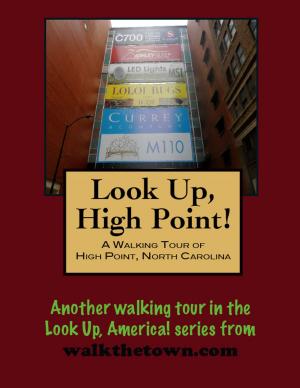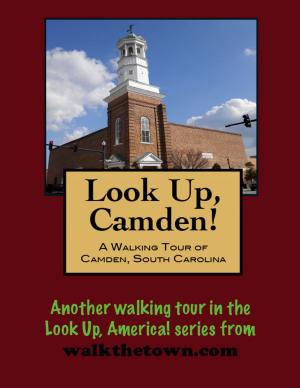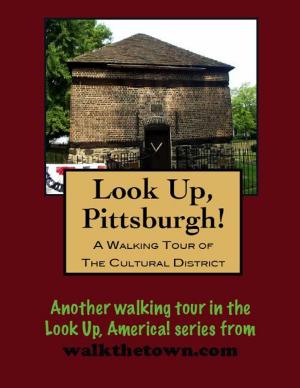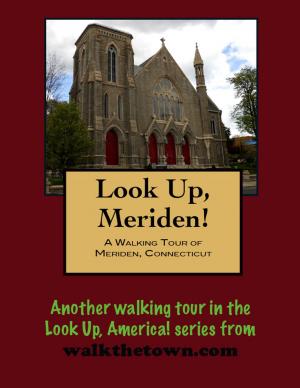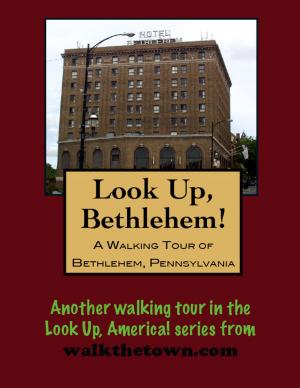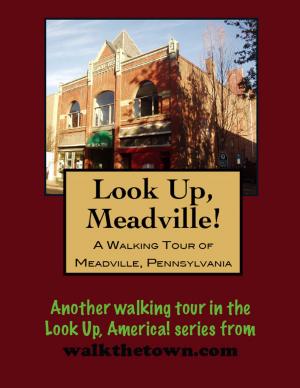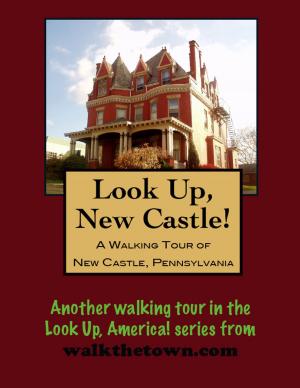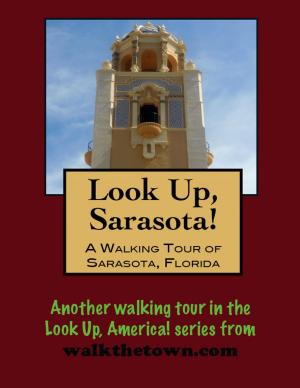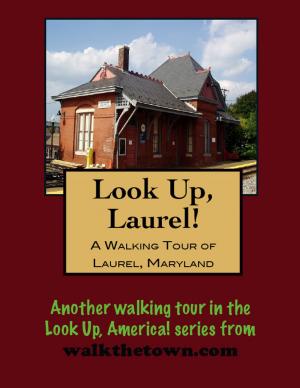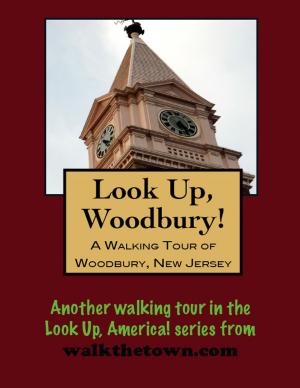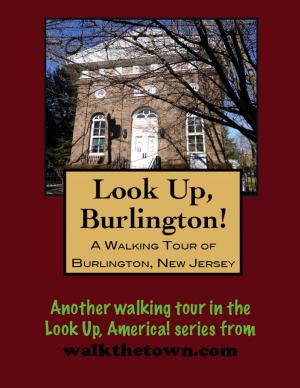Look Up, Chattanooga! A Walking Tour of Chattanooga, Tennessee
Nonfiction, Travel, United States, South, History, Americas| Author: | Doug Gelbert | ISBN: | 9781465800992 |
| Publisher: | Doug Gelbert | Publication: | September 19, 2011 |
| Imprint: | Smashwords Edition | Language: | English |
| Author: | Doug Gelbert |
| ISBN: | 9781465800992 |
| Publisher: | Doug Gelbert |
| Publication: | September 19, 2011 |
| Imprint: | Smashwords Edition |
| Language: | English |
There is no better way to see America than on foot. And there is no better way to appreciate what you are looking at than with a walking tour. Whether you are preparing for a road trip or just out to look at your own town in a new way, a downloadable walking tour is ready to explore when you are.
Each walking tour describes historical and architectural landmarks and provides pictures to help out when those pesky street addresses are missing. Every tour also includes a quick primer on identifying architectural styles seen on American streets.
The dramatic bend in the Tennessee River here was a Cherokee Nation trading post and later a ferry operated by Chief John Ross of Scotch and Cherokee descent. In 1838 the Cherokee were forcibly removed from their ancestral lands and marched to present-day Oklahoma, leaving behind only their name for the mountains that frame the area, or for good fishing or perhaps for an eagle's nest. Whatever the origin, Chattanooga became the name for the one-time Ross's Landing when it was incorporated as a city in 1838.
As the only settlement of any consequence for over 100 miles in either direction on the Tennessee River, Chattanooga flourished on river trade, first in salt and then bacon and flour and whisky and cotton. In the 1850s the railroads arrived and the town became an even more important trade center. And an obvious prize during the Civil War. At first Confederates were able to repel invading Union forces but that only brought more Federal troops in overwhelming numbers and Chattanooga spent the last years of the war under Union occupation, used as a staging ground for General William Sherman's march through Georgia.
The town's natural assets and transportation framework attracted Northern money after the war and Chattanooga became a manufacturing center. Growth was so rapid the town fancied itself "the Dynamo of Dixie." Chattanooga paced the South in the production of iron and steel equipment and hosiery and furniture and patent medicines. After the population doubled in the 1920s, the city claimed more than 100,000 residents by 1930.
While powering the economic engine, industry was not so kind to the health of the community. The same mountains that enabled Chattanooga to officially adopt the nickname "Scenic City" also trapped pollutants from the factories to such a degree that in 1969 the federal government declared Chattanooga's air to be the dirtiest in America. The city lost more than 10% of its population over the coming years. Not accepting its plight government and civic leaders tackled the problem and Chattanooga became the only major city to actually regain its lost residents in recent years.
Few cities the size of Chattanooga had their streetscape shaped so pervasively by one man as Chattanooga. Reuben Harrison Hunt was born the son of a merchant, planter and Civil War veteran in 1862. At the age of 20 Hunt was in Chattanooga working as a builder and carpenter with the Adams Brothers architectural firm. He studied architecture and won the commission to design a new building for his First Baptist Church. Hunt opened his own design firm and until 1935 was responsible for nearly every important building during the town's boom years. Although he was not an architectural innovator Hunt interpreted the important design trends of the age for churches, commercial properties and public buildings.
Many of Reuben Harrison Hunt's buildings survive in Chattanooga one hundred years on and we will start our walking tour in the shadow of one of his best, a little project the American Institute of Architects was particularly fond of...
There is no better way to see America than on foot. And there is no better way to appreciate what you are looking at than with a walking tour. Whether you are preparing for a road trip or just out to look at your own town in a new way, a downloadable walking tour is ready to explore when you are.
Each walking tour describes historical and architectural landmarks and provides pictures to help out when those pesky street addresses are missing. Every tour also includes a quick primer on identifying architectural styles seen on American streets.
The dramatic bend in the Tennessee River here was a Cherokee Nation trading post and later a ferry operated by Chief John Ross of Scotch and Cherokee descent. In 1838 the Cherokee were forcibly removed from their ancestral lands and marched to present-day Oklahoma, leaving behind only their name for the mountains that frame the area, or for good fishing or perhaps for an eagle's nest. Whatever the origin, Chattanooga became the name for the one-time Ross's Landing when it was incorporated as a city in 1838.
As the only settlement of any consequence for over 100 miles in either direction on the Tennessee River, Chattanooga flourished on river trade, first in salt and then bacon and flour and whisky and cotton. In the 1850s the railroads arrived and the town became an even more important trade center. And an obvious prize during the Civil War. At first Confederates were able to repel invading Union forces but that only brought more Federal troops in overwhelming numbers and Chattanooga spent the last years of the war under Union occupation, used as a staging ground for General William Sherman's march through Georgia.
The town's natural assets and transportation framework attracted Northern money after the war and Chattanooga became a manufacturing center. Growth was so rapid the town fancied itself "the Dynamo of Dixie." Chattanooga paced the South in the production of iron and steel equipment and hosiery and furniture and patent medicines. After the population doubled in the 1920s, the city claimed more than 100,000 residents by 1930.
While powering the economic engine, industry was not so kind to the health of the community. The same mountains that enabled Chattanooga to officially adopt the nickname "Scenic City" also trapped pollutants from the factories to such a degree that in 1969 the federal government declared Chattanooga's air to be the dirtiest in America. The city lost more than 10% of its population over the coming years. Not accepting its plight government and civic leaders tackled the problem and Chattanooga became the only major city to actually regain its lost residents in recent years.
Few cities the size of Chattanooga had their streetscape shaped so pervasively by one man as Chattanooga. Reuben Harrison Hunt was born the son of a merchant, planter and Civil War veteran in 1862. At the age of 20 Hunt was in Chattanooga working as a builder and carpenter with the Adams Brothers architectural firm. He studied architecture and won the commission to design a new building for his First Baptist Church. Hunt opened his own design firm and until 1935 was responsible for nearly every important building during the town's boom years. Although he was not an architectural innovator Hunt interpreted the important design trends of the age for churches, commercial properties and public buildings.
Many of Reuben Harrison Hunt's buildings survive in Chattanooga one hundred years on and we will start our walking tour in the shadow of one of his best, a little project the American Institute of Architects was particularly fond of...

